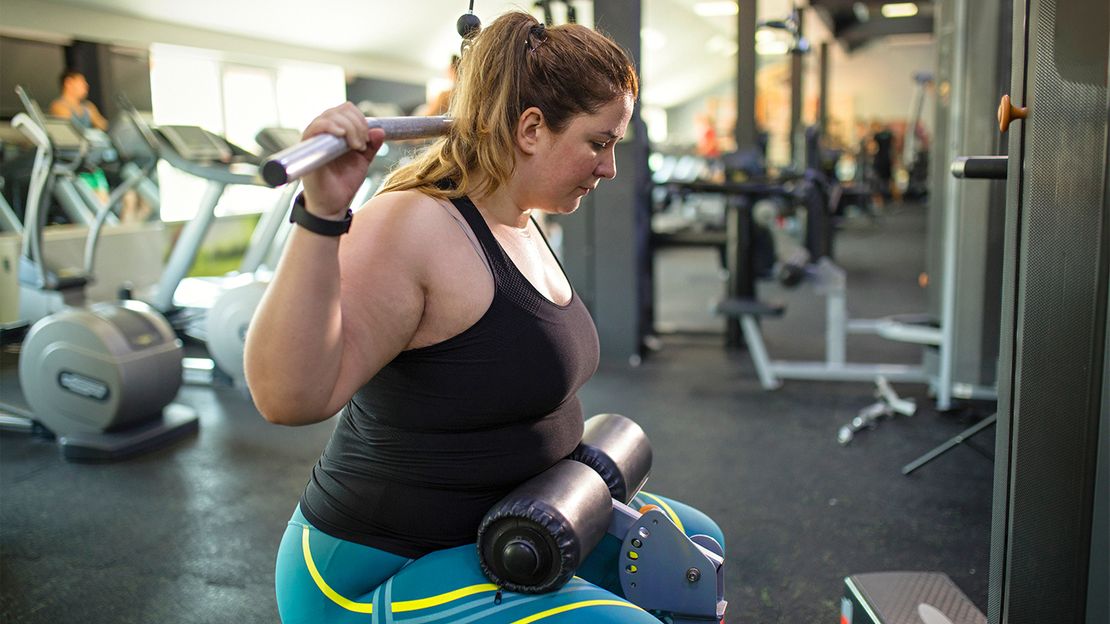How Exercise Helps Prevent and Manage Type 2 Diabetes

Everyday Health – Updated for October 2021
Author: K. Aleisha Fetters
Medically Reviewed by Kacy Church, MD
If you’re working to manage type 2 diabetes — or trying to prevent the condition altogether — exercise is a crucial step in making your goal a reality.
“The long-term benefits of exercise on blood sugar and insulin health are unquestionable,” says Rasa Kazlauskaite, MD, associate professor of endocrinology, diabetes, and metabolism at Rush University Medical Center in Chicago.
For example, a review published in March 2020 in Mayo Clinic Proceedings found that in people with type 2 diabetes, regular exercise can reduce dependence on glucose-lowering oral medications and insulin. And according to a study published in November 2015 in The Lancet, increased physical activity can help reverse prediabetes, which the Centers for Disease Control and Prevention notes affects more than 1 in 3 adults in the United States.
Fortunately, exercising for insulin health doesn’t have to be complicated. The guidelines for exercising with diabetes are pretty much a mirror image of the federal ones for all adults, regardless of blood sugar status. According to the American Diabetes Association, adults with type 2 diabetes should perform at least 150 minutes of moderate- to vigorous-intensity physical activity per week. Ideally, weekly exercise would be spread over at least three days, with no more than two days passing without some form of activity. For those engaging in high-intensity exercise, shorter durations of 75 minutes per week may be sufficient.
How Exercise Improves Insulin Health
Exercise helps manage prediabetes and type 2 diabetes by lowering blood glucose levels and improving insulin sensitivity throughout the body. Here’s how:
Taking Up Excess Glucose An immediate benefit of exercise is lowering excessively high blood sugar levels, Dr. Kazlauskaite says. Exercise triggers the uptake of glucose from the bloodstream into the working muscles and organs. This is one reason experts agree that people with elevated blood sugar levels can benefit from walks after meals.
Building Muscle When it comes to blood sugar management, muscle is consistently underrated. “After you eat, 70 to 80 percent of the glucose in your body goes to your muscles,” she says. “The lower our muscle mass is, the more we hinder our capacity to clear glucose from the bloodstream.” On the flip side, the more muscle we maintain throughout the aging process, the more insulin receptors we have and the greater our glucose “sink,” Occhipinti says.
Improving Weight Loss Losing just 5 to 10 percent of your body weight can improve your A1C, which is the two to three month average of your blood sugar levels, according to John Hopkins Medicine. And although nutrition is the main driver of weight loss, the addition of exercise allows for far greater outcomes, Dr. Kazlauskaite says. That’s because exercise both burns calories and helps the body maintain lean, metabolism-supporting muscle, which can otherwise decline during caloric deficits.
Reducing Visceral Fat Abdominal fat, also called visceral fat, is a major player in the development of insulin resistance and type 2 diabetes. “These fat cells not only store energy but they can produce and release a host of chemicals and hormones that make it harder for the body to use insulin, worsening insulin resistance,” Occhipinti says. When trying to lose belly fat, research suggests that resistance training is the most beneficial form of exercise in people with insulin resistance.
How Exercise Helps Prevent Complications of Type 2 Diabetes
Apart from managing blood sugar and insulin levels, exercise functions to slow, stop, and in some cases, even reverse the long-term effects that occur due to the progression of type 2 diabetes. Here are some of the main ways that physical activity combats insulin resistance-related complications:
Improving Vascular Health When you exercise, your muscles release a host of compounds that benefit vascular and circulatory health, Occhipinti says. That means more oxygen and nutrients can get where they need to go, reducing the risk of diabetes-related neuropathy, vision loss, and heart issues. Improved blood flow may also aid in joint health, he explains.
Lowering Inflammation Inflammation throughout the body is believed to be a primary cause of the progression of type 2 diabetes and its related conditions such as arthrosclerosis (arterial plaque buildup), cognitive decline, and joint deterioration, according to an article published in April 2019 in the European Cardiology Review. Yet routine exercise can help lower chronically high inflammation levels to mitigate its detrimental effects, Occhipinti explains.
Improving Cholesterol and Blood Pressure Apart from strengthening heart health through improvements in blood flow and reductions in inflammation, exercise also targets blood pressure and cholesterol levels, Occhipinti says. Both are leading contributors to progressive heart disease, according to the American Heart Association.
Restoring Nerve Function In one study, men and women significantly reduced diabetes-related pain and neuropathy in just 10 weeks of exercise. Researchers note that during the course of the study, nerve health and function also improved. This has broad implications for joint health, safety from injury and infection, and organ function.
Boosting Joint Health Diabetes-related joint pain and mobility limitations such as frozen shoulder are common complications of insulin resistance, says Ankush Gupta, MBBS, a diabetologist based in Pune, India. The cause isn’t always clear, but nerve damage, arterial disease, and excess body weight may play a role — and exercise combats all of them, explains Dr. Gupta. Perform both strength and mobility exercises through a full range of motion.
6 Tips to Get Started with Exercise
1. Get the go-ahead from your healthcare team. Talk to your primary care physician or endocrinologist before beginning a workout program, recommends Colin Laughlin, CSCS, founder of QualityLife Fitness virtual workout center. This will help you ensure that you’re choosing a form of exercise that is best suited for any coexisting health conditions that you may have, such as heart disease or diabetic neuropathy.
2. Make a plan to ensure your blood sugar stays in a healthy range. “Exercise must be carefully planned with intake of food and insulin to prevent hyper- or hypoglycemia,” explains Kristen Gasnick, a board-certified doctor of physical therapy based in Livingston, New Jersey. Again, talking to your medical team can be important, as is testing your blood sugar before and after exercise. When first getting started with exercise, you may also need to test during your workout, she says. Continuous glucose monitors can be helpful for exercisers.
3. If you’re new to exercise, take baby steps. “If 150 minutes per week seems like a lot, start with a goal of 45 minutes of exercise for the week, then 60, then 75, and continue until you hit and maintain the goal of 150 minutes,” Occhipinti says. In addition to being one of the best ways to stay motivated to exercise when you have diabetes, this gradual approach to exercise will reduce the risk of exercise aches, pains, and injury.
4. Think outside of structured workouts when considering movement. Dedicated workouts are great, but including everyday activity and physical recreation is equally, if not more, important, Laughlin says. That’s because NEAT (nonexercise activity thermogenesis), which encompasses all of the energy, or calories, that you burn outside of your workouts, often accounts for more than what you might burn during structured exercise. Performing everyday physical activities like walking while doing your errands, taking out the trash, and cleaning the house also helps maintain functional strength and mobility.
5. Start with low-impact exercise, especially if you have nerve damage. Stationary cycling, weight-bearing strength training, swimming, and other low- to no-impact workouts are gentle ways to ease into exercise. They’re especially beneficial for people exercising with diabetic neuropathy. “Those with diabetic peripheral neuropathy, associated nerve damage, and loss of sensation in the feet are at an increased risk of skin breakdown and ulceration,” Dr. Gasnick says.
6. Focus on large muscle groups for maximum benefits. When it comes to resistance training, multijoint exercises such as squats, lunges, rows, and chest presses come with the greatest per-rep benefits for both blood sugar management and the progression of related complications, says Occhipinti.






